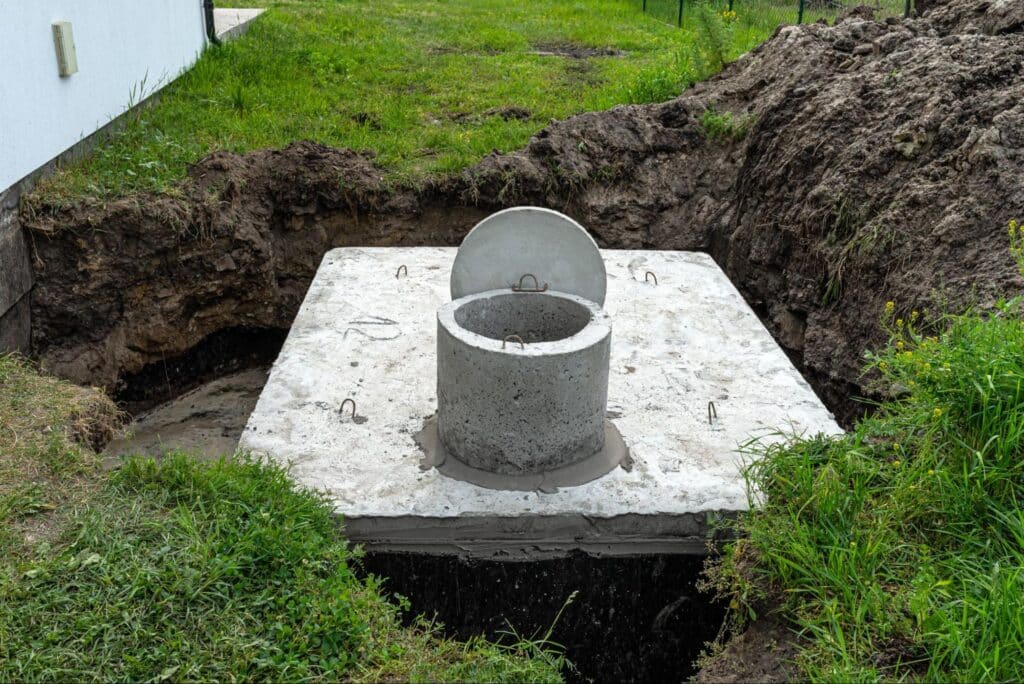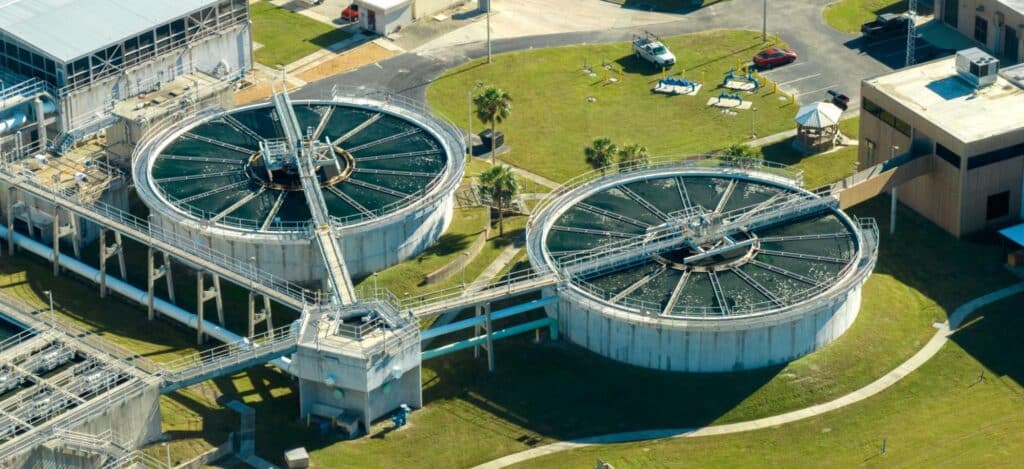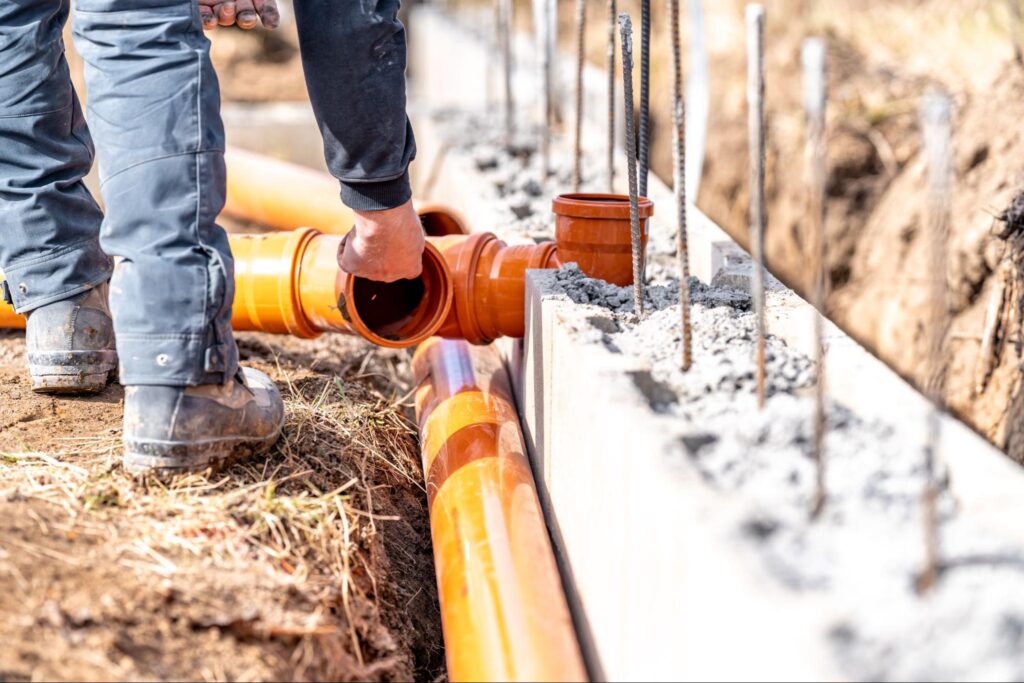Keyword: Septic vs Sewer
Meta title: Septic vs Sewer: Vital Guide for Southern Indiana Homeowners
Meta description: Explore the vital differences between septic vs sewer systems in Southern Indiana, helping homeowners make informed choices for their new builds.
Choosing between a septic system and a sewer connection is a critical decision for Southern Indiana homeowners, prospective homebuilders, and families interested in custom or semi-custom homes. This choice greatly impacts construction costs, maintenance responsibilities, and environmental considerations. In a region where terrains range from urban centers to rural areas with clay-rich soils, selecting the most suitable wastewater management system is especially important.
At Reinbrecht Homes, we leverage our decades of experience in homebuilding to help you navigate these considerations. This comprehensive guide covers the key differences between septic and sewer systems, reviews current local regulatory trends, highlights cost factors, and offers practical advice to ensure your home’s wastewater infrastructure remains efficient and environmentally sound.
How Septic and Sewer Systems Work
Wastewater systems fall into two categories: self-contained septic systems on your property or a connection to a public sewer. Understanding their fundamental operation is the first step in deciding which is right for you.
Septic Systems: Your On-Site Treatment Plant
A septic system is a private wastewater treatment unit installed underground on your property. The process is straightforward:
- Wastewater from your home’s plumbing flows into a septic tank.
- Inside the tank, solids settle to the bottom as “sludge,” while lighter materials like grease float to the top as “scum.” Bacteria in the tank work to break down the solid waste.
- The partially treated liquid, called effluent, flows out of the tank and into a drainfield.
- The drainfield is a series of perforated pipes laid in trenches, allowing the effluent to be slowly dispersed and naturally filtered by the surrounding soil.
Sewer Systems: A Connection to a Municipal Network
A public sewer system collects wastewater from numerous homes and transports it to a centralized treatment facility.
- Wastewater from your home flows through a single pipe, called a lateral line, that runs from your house to the municipal sewer main, usually located under the street.
- This main pipeline collects waste from your entire neighborhood and transports it to a local water treatment plant.
- At the plant, the wastewater undergoes a complex, multi-stage treatment process before being safely discharged back into the environment.
Cost Comparison for Southern Indiana Homeowners
When considering septic vs sewer systems, both initial investments and ongoing financial commitments are essential factors. These costs vary by property location, the type of system selected, and evolving local fee structures.
Installation Costs
The upfront investment is one of the most significant factors in your decision. Here’s how the initial installation costs for each system typically compare.
Septic Systems:
Installing a septic system in Southern Indiana typically involves:
- A soil evaluation and percolation test (perc text).
- Purchase and installation of the septic tank.
- Excavation and creation of the drainfield.
- Obtaining necessary permits (which may see modest changes in fees with future environmental initiatives).
Based on property specifics—such as soil composition and tank size—installation costs generally range from $5,000 to $12,000 or more. Some counties may later require additional site inspections or pre-treatment options that could moderately increase new installation expenses.
Sewer Connections:
Connecting to a municipal sewer involves:
- Payment of a tap fee to the local utility.
- Expenses for extending established sewer lines if your property is far from existing infrastructure.
- Trenching and plumbing modifications to integrate with the public system.
Although current discussions hint at potential future fee adjustments, specific tap fee ranges have not been substantiated. Therefore, while homeowners should budget for connection costs, the exact figures remain subject to local regulatory determinations and in-depth local assessments.
Ongoing Costs
Beyond the initial build, it’s crucial to consider the long-term costs. Here’s how the ongoing expenses for septic and sewer systems differ.
Septic Systems:
Routine maintenance, including pumping (typically every 3 to 5 years at costs ranging from $250 to $500) and occasional repairs, is the homeowner’s responsibility. The absence of monthly bills can be an attractive aspect for those comfortable with budgeting periodic upkeep expenses.
Sewer Systems:
Sewer services generally incur regular monthly or quarterly bills based on water consumption. Rates vary by municipality and usage, and while some homes in smaller communities might pay around $40 to $60 monthly, higher consumption or local fee changes could increase this amount over time. Over many years, these ongoing charges might surpass the combined lifetime costs of installing and maintaining a septic system—especially for homeowners who remain in the same property for several decades.
Influencing Factors
- Soil and Topography: Clay-rich soils common in parts of rural Southern Indiana can affect septic system costs.
- Existing Infrastructure: Newer neighborhoods with shared sewer lines can lower per-home connection fees.
- Local Governance: It remains important to monitor local regulatory discussions, as some counties are reviewing updated guidelines that may influence future cost structures and inspection requirements.
Pros and Cons of Septic vs Sewer Systems

Evaluating the benefits and drawbacks of each system helps homeowners determine which choice best aligns with their long-term lifestyle and financial goals.
Septic Systems
Pros:
- Independence from municipal infrastructure, often translating into lower costs in very rural settings.
- Natural soil filtration that, when appropriately designed, effectively treats wastewater on-site.
- Greater control for the homeowner, who can extend system longevity through proactive maintenance.
Cons:
- Routine pumping and regular inspections are necessary to prevent system malfunctions.
- System performance is highly influenced by local soil conditions, sometimes necessitating specialized solutions.
- Improper installation or inadequate maintenance may lead to environmental contamination, which can result in regulatory fines or expensive remedial work.
Sewer Systems
Pros:
- Minimal homeowner maintenance since treatment and disposal are managed off-site by professionals.
- Typically more efficient for densely populated suburban neighborhoods with established infrastructure.
- Frees up land area that would otherwise be needed for a septic drainfield.
Cons:
- Ongoing service bills may accumulate to significant amounts over time.
- Homeowners have less direct control over system maintenance, and pricing is influenced by municipal rate-setting.
- In some areas, limited access to sewer lines may necessitate costly extensions or additional infrastructure investments.
Making the Right Choice: Local Regulations and Use Cases in Southern Indiana
In Southern Indiana, your property’s location is the single biggest factor determining your wastewater solution. The choice between septic and sewer is governed by a framework of state and local regulations, managed primarily by the Indiana Department of Health (IDOH) and your respective county health department. Understanding how these rules apply in different scenarios is key to a smooth building process.
Scenario 1: Urban and Suburban Areas (e.g., Evansville, Newburgh)
In developed areas with established infrastructure, connecting to the municipal sewer system is almost always the required and most practical option.
- The Process: Homeowners in cities like Evansville will work with the Evansville Water and Sewer Utility or a similar local provider. The process involves paying a one-time tap fee to connect to the public sewer line.
- Regulatory Oversight: The utility provider governs the connection process, ensuring that all plumbing and trenching meet their construction and safety standards. This eliminates the need for the homeowner to manage onsite treatment, as the municipality handles all wastewater processing.
Scenario 2: Rural Properties (e.g., undeveloped land in Warrick, Vanderburgh, or Posey Counties)
For homes built outside of municipal service areas, a septic system is typically the only viable solution. This process is more hands-on and is closely regulated by your county’s health department.
The Process & Regulations:
- Site Evaluation: Before anything else, a thorough soil test (often called a percolation or “perc” test) is required. This analysis, conducted by a licensed professional, determines if the soil can effectively absorb and filter wastewater. The clay-rich soil common in parts of Southern Indiana can sometimes make this step challenging, potentially requiring a more specialized (and costly) system design.
- Permitting: Once the site is approved, you must obtain a permit from the county health department. Fees for these permits vary by county.
- Installation and Inspection: The septic system must be installed by a licensed contractor and is subject to inspection during and after installation to ensure it complies with all state and local codes for tank size, drainfield placement, and setbacks from wells or waterways.
Scenario 3: Transition Zones (The Urban Fringe)
Properties on the edge of developing areas may have a choice between septic and sewer, making it a critical decision point that requires careful research.
- The Balancing Act: In these situations, you must weigh both options by engaging with both regulatory bodies.
- For Sewer: Contact the local utility to confirm if sewer lines are accessible. If not, find out the cost to extend the service to your property, which can sometimes be substantial.
- For Septic: Simultaneously, contact the county health department to begin the site evaluation process to determine if a septic system is even feasible and what it might cost.
- Making the Call: The final decision here often comes down to a cost-benefit analysis of the sewer connection fees versus the installation and long-term maintenance costs of a septic system.
A Note on Evolving Regulations
It is important for homeowners to be aware that the Indiana Department of Health and various county health departments periodically review wastewater regulations. There are ongoing discussions about potential updates to septic inspection requirements and sewer connection fees, particularly in counties like Warrick and Vanderburgh. We recommend contacting your local county health department for the most current information when planning your project.
Planning for Future Homeownership and Infrastructure
Prospective homeowners and builders in Southern Indiana should weigh both current factors and potential future regulatory changes when deciding between a septic system and a sewer connection. Considerations include:
- Property Resale: Homes with well-documented and properly maintained wastewater systems often command higher resale values. Retaining comprehensive records of installation, inspections, and upgrades can benefit future buyers.
- Future Upgrades: If you opt initially for a septic system with the possibility of later connecting to a sewer, it is wise to financially plan for potential decommissioning and connection expenses.
- Zoning and Permits: Early coordination with local planning offices is essential to ensure that any necessary permits and inspections are obtained without delay. In some areas, recent proposals have introduced additional review requirements for environmentally sensitive or rapidly growing communities.
Keep in mind that any significant property changes—whether adding a guesthouse, an outbuilding, or a pool—can affect wastewater capacity. Comparing potential upgrade requirements for both systems is recommended when planning for long-term changes. As you plan, it’s worth noting that wastewater technology is always improving. Future advancements may include smart monitoring systems and more efficient septic treatments, making proactive maintenance even easier.
Who to Contact for Assistance in Southern Indiana

Deciding between a septic system and a sewer connection involves coordinating with several different experts and agencies. Here’s who to contact for reliable information:
- For Septic Systems: Your first call should be to your local county health department. They are the regulatory authority for all onsite wastewater systems and can provide a list of licensed soil scientists for testing and certified installers in your area.
- For Sewer Connections: Contact your local municipal utility provider. For residents in and around Evansville, this is the Evansville Water and Sewer Utility. They will provide the most accurate information on sewer line availability, connection fees, and technical requirements.
- For Zoning and Building Permits: Before you build, contact your local area plan commission or building commission (e.g., the Warrick County Area Plan Commission or the Evansville-Vanderburgh County Building Commission). They are the definitive source for zoning regulations, land use requirements, and issuing the necessary building permits for your new home.
- For Construction Financing: To fund your project, speak with loan officers at local banks and credit unions that specialize in construction loans. They understand the unique financing process for custom home builds.
- Your Expert Guide Through the Process: Bringing all these pieces together can be overwhelming. At Reinbrecht Homes, our role is to be your central point of contact and advocate, coordinating with all these entities on your behalf—from the initial soil test to the final building inspection.
Frequently Asked Questions (FAQs)
What factors determine if my property can support a septic system?
The key factors include soil permeability, drainage capacity, groundwater depth, and available drainfield area. Typically, a licensed soil scientist or local inspector conducts these evaluations to determine if a septic system is feasible for your site.
Can I switch from a septic system to a sewer connection?
Yes, switching is generally possible where municipal sewer lines exist. The process involves decommissioning the septic system—which is overseen by the county health department—and meeting the utility’s connection requirements. Note that potential future fee adjustments may impact overall costs.
Are there financial incentives available?
Some local and state programs may offer grants, low-interest loans, or cost-sharing opportunities for installing or upgrading onsite wastewater systems. Homeowners should check with their county health department or local utility provider for current incentives and eligibility criteria.
How do utility bills affect my monthly budgeting?
Sewer service fees vary based on water usage and local rate policies. Although some customers might expect moderate monthly charges, actual fees depend on consumption and any updated local regulations. Over time, these charges may exceed the cumulative costs of installing and periodically maintaining a septic system—if you plan to remain in the same home for an extended period.
Making the Right Choice for Your Southern Indiana Home
Choosing between septic and sewer systems in Southern Indiana is influenced by factors such as local soil conditions, evolving homebuilding regulations, and your personal preferences regarding system maintenance. Careful planning and ongoing research are key to ensuring that your home’s wastewater management remains effective, cost-efficient, and compliant with environmental standards.
If you’re planning a new home or undertaking significant renovations, contact Reinbrecht Homes today for a free consultation. We specialize in custom homebuilding in Southern Indiana and offer expert advice on system selection, financing options, and more to help you secure a safe and sustainable future for your home.

